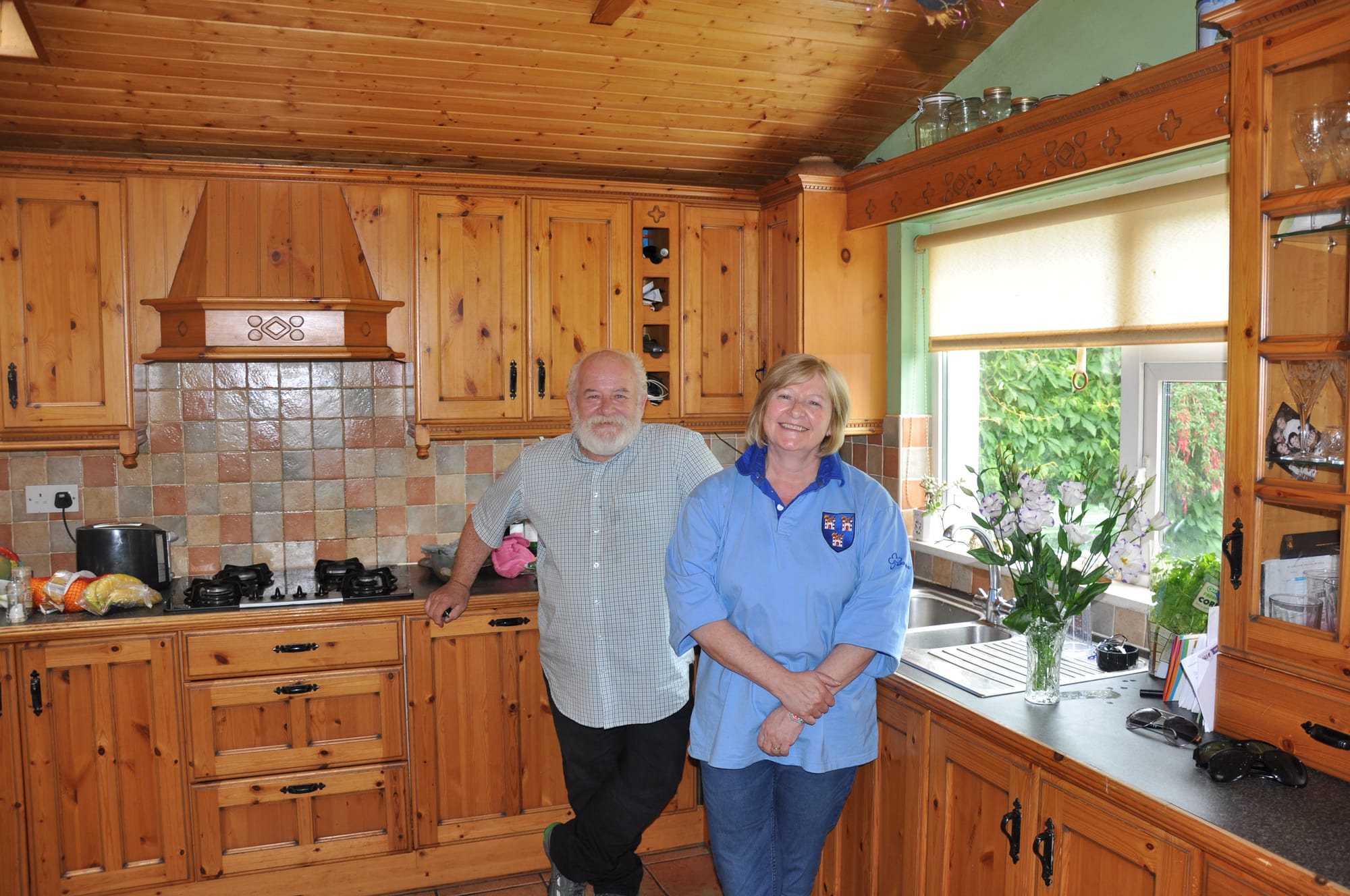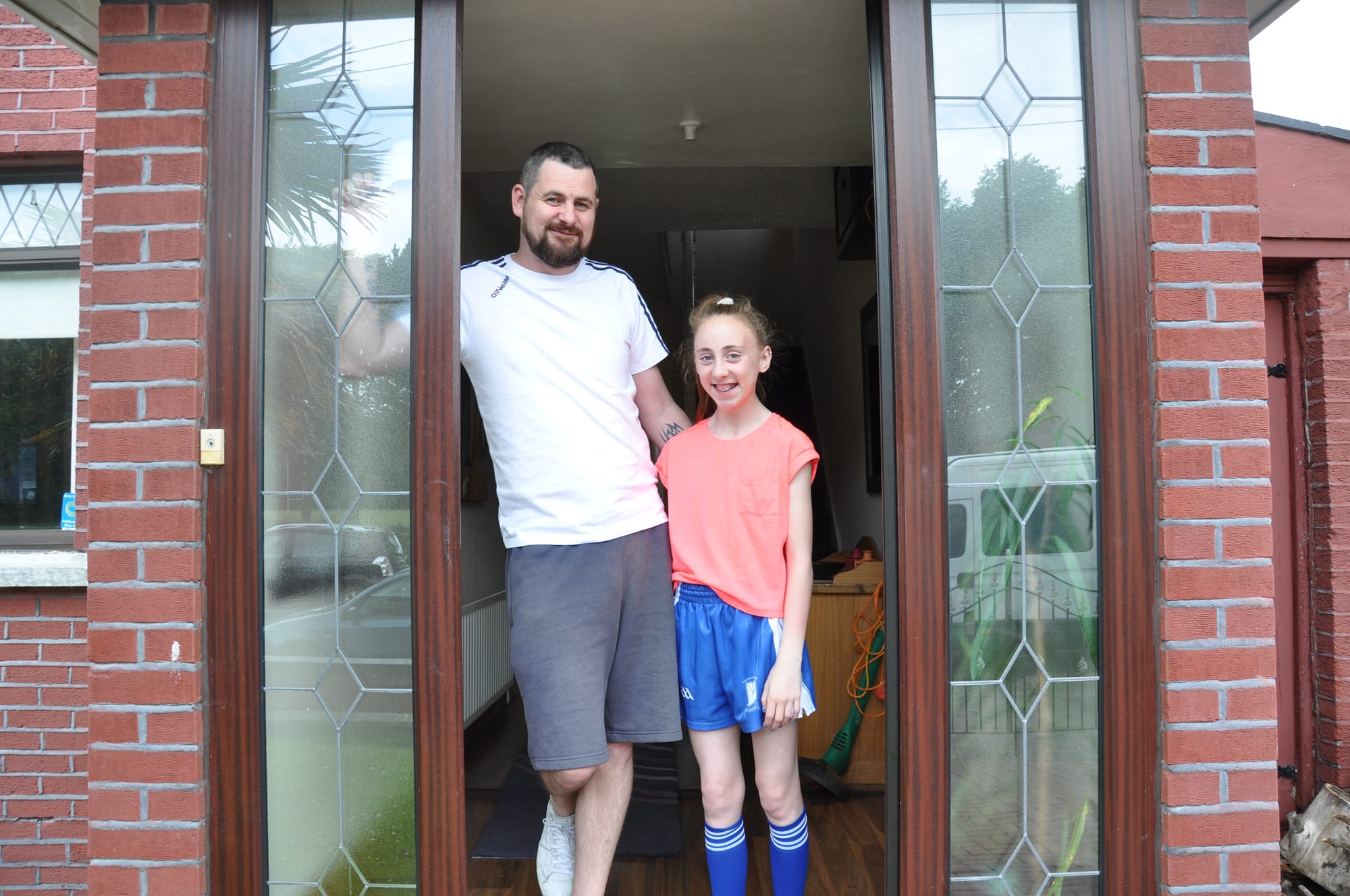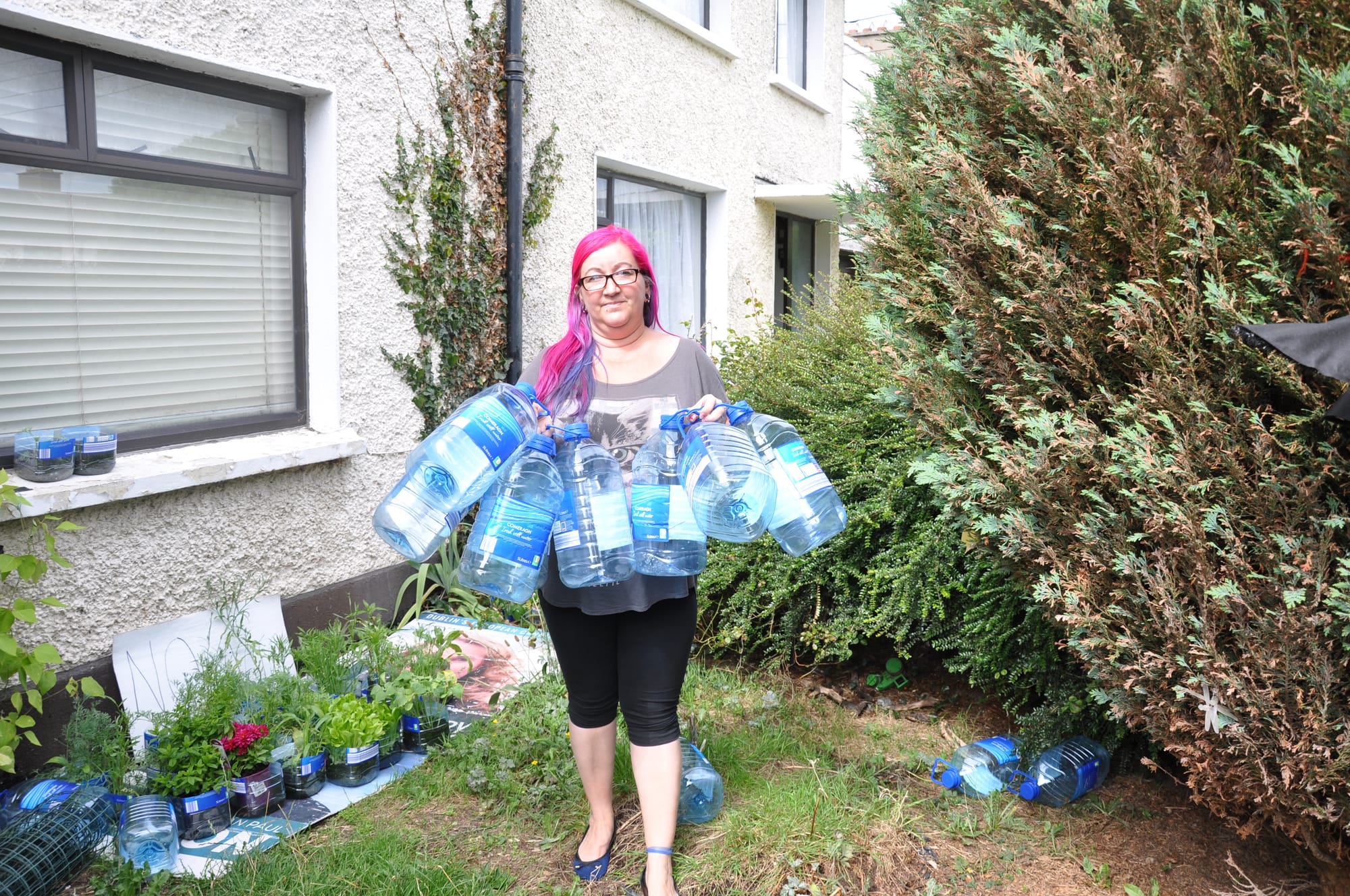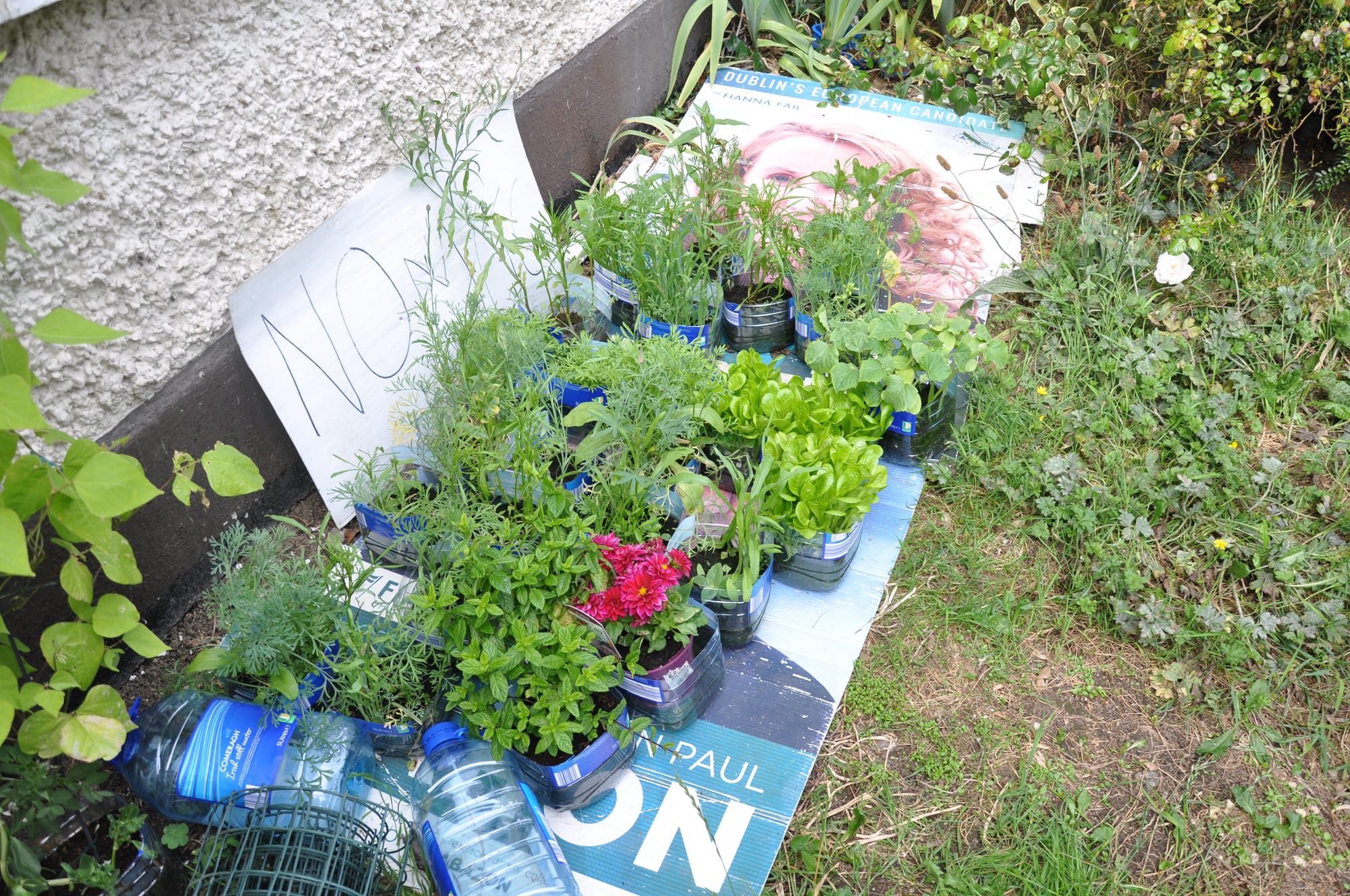What’s the best way to tell area residents about plans for a new asylum shelter nearby?
The government should tell communities directly about plans for new asylum shelters, some activists and politicians say.
In Raheny, there’s lead in the water. Who should pay to get it fixed?

The words frighten you, says Alison Field. “Not fit for human consumption. This is Ireland. This is Dublin. We’re not in a third-world country.”
It’s a Saturday morning and she is standing outside Raheny Shopping Centre with several members of Lead-Free Water Saint Anne’s(LFWSA), handing out flyers to locals.
She and LFWSA want to raise awareness of the problem of lead contamination in the area’s water supply, and provide people with instructions and lab-submission forms so they can have their water tested for the metal.
The group, started last December, encourages people who get their water tested to send on their results. As Field tells it, many are coming back with levels in excess of the legal limit of 10 micrograms per litre (changed from 25 in 2013) and with a clear warning: this water is not fit for human consumption.
According to the Department of Environment, there could be 200,000 homes with lead pipes. “So,” says LFWSA spokesperson Tony McHale, “as we speak, a million people are being poisoned by lead.”
The Saint Anne’s estate, a quiet estate of neat two-storey houses that borders the northwest side of St Anne’s Park, has been particularly prone to high levels of lead concentration in the water.
In May, the Irish Times published figures of the 20 Dublin homes with the highest levels of lead concentration in water in the capital. Four out of five were in Saint Anne’s estate. The highest was also recorded there, in a house on Watermill Drive. With levels of 825 micrograms per litre, it was 82 times the legal limit.
Alison Field, her husband, their eight year-old daughter and their 22-month-old son live on Maryville Road, where a house ranks third on the top-20 lead list.
Levels of lead in their water are too low to make the list, but they are still above the legal limit and therefore deemed by the Dublin Public Analyst’s Laboratory as not fit for human consumption, she says.
“You can’t use the water for anything bar washing,” she says. “Can’t use it to drink, cook, wash or rinse vegetables.” They buy five-litre bottles of water and go through one or one and a half a day.
“A good chunk fills your kettle alone,” she says. “I drink a lot of tea and coffee.”
She’s been drinking tap water for years. “I must be full of lead.”
Field worries for her children.
“I was making their formula with it,” she says. “I worry about him,” she points to her young son in a pram. At his age, he is particularly susceptible to the adverse affects of lead-contaminated water. She is thinking about having his blood tested to see if there are excessive traces of lead in his system.
According to a 2013 joint position paper from the HSE and the EPA on lead in drinking water, “unborn babies, infants and young children are more likely to have a higher absorption rate, and severity of adverse health effects due to lead”.
Children who drink water containing excess levels of lead could experience delays in physical and cognitive development.
The risks to adults are just as serious. At high levels of exposure, lead can cause damage to most organs in the body. In some cases, it can be fatal. Studies have also shown that insidious health effects can result from chronic exposure to lower levels of the metal.
In 2013, the HSE revised its stance on lead in drinking water. Before that, it warned: “people should try to drink water with as little lead as possible”. After, it became: “no level of lead in drinking water is now considered to be completely safe”.
The lead problem in Saint Anne’s surfaced in April last year, says Sinn Fein Councillor Ciaran O’Moore.
Dublin City Council were conducting tests on the water supply in the area of Saint Anne’s estate, Raheny. High levels of lead were found in the water of one of O’Moore’s constituents, Paddy Noone, on Watermill Road. The levels were nine times the legal limit.
O’Moore sent out leaflets to residents of Saint Anne, warning that there might be dangerous levels of lead in their water. He asked the council to test the rest of the houses in the estate. The council obliged and tested several houses, but “then the onslaught came”, says O’Moore.
As Moore tells it, when the pattern of excessive levels of lead started to emerge, the council said they hadn’t the resources to continue testing. The can was kicked over to Irish Water, he says, and Irish Water have been kicking it back ever since.
In a year, very little has been done to fix the problem. None of LFWSA’s four demands have been met. They call for clean safe water now, water tests for all households, confirmation from Irish Water that there are no lead pipes in the public way, and implementation of the most effective way to solve the lead piping problem.
They also petitioned the “appropriate authorities for a water-storage tank to be centralised in the estate, in the car park of the tennis courts at St Anne’s Park, so that we can all go and get water and stop buying it,” McHale says. But there has been no move on this.
Irish Water didn’t comment on this directly, but a spokesperson did note that there are a possible 200,000 houses in the country in a similar situation to St Anne’s in Raheny; the cost of such a measure for all would be considerable.
There has been no rush by Irish Water or Dublin City Council to tackle the problem head-on and replace the lead pipes. As they see it, this problem lies with the householder.
Irish Water claims that there are no lead water mains in Ireland. “The issue of lead seeping into water on private properties is as a result of lead piping which was used in houses built up to and including the 1970s,” said a spokesperson from Irish Water in an email.
Under the Water Services Act 2007, service-connection pipes and internal plumbing within the boundary of a property are the responsibility of the owner of the premises.
So if lead pipes need replacing, Irish Water won’t be paying for it. Not unless they’re on the public side, running to the mains, and these will only be replaced when the householder has replaced theirs.
It will take “at least ten years” and “will cost €200-€300 million” to replace all public lead service connections, estimates Irish Water, in its Lead in Drinking Water Mitigation Plan.
There are different estimates for how much it would cost for a household to replace its lead pipes. Councillor O’Moore gives a ballpark range of between €300 and €3,000. But it could be as high as €5,000, if the government’s proposed lead-replacement grant scheme is anything to go by.
In June, Minister for Environment Alan Kelly announced plans for a grant scheme to replace lead pipes for low-income earners. The maximum grant will be €4,000 or 80 percent of the cost, for households earning less than €50,000.
There will be a reduced grant of €2,500, or 50 percent of the costs, for those earning between €50,000 and €75,000. Funding for the measure will be finalised in the context of Budget 2016.
O’Moore believes that Irish Water should be responsible for the replacement of pipes up to the stopcock inside your house. “We didn’t install the lead pipes, Dublin City Council did when the houses were built,” he says.
“Put it this way: You have a gas main going into your garden and your meter is either on the side of your house or inside your house. If you get a leak in your front garden, what happens? Bord Gais come and repair the leak, that’s it,” he says.
In Saint Anne’s estate, Brendan and Ellen White agree that either Irish Water or Dublin City Council should be responsible for replacing the pipes. They live on Watermill Avenue with their three children aged 24, 22, 16. They haven’t had a water test, but Brendan, a plumber, says “there’s lead coming in alright. You can see the pipe coming up out of the ground under the stairs.”

Brendan sits at a large table in the centre of a bright, wood-paneled kitchen. Ellen sits in a chair by the glass doors that open out onto their garden.
Ellen says her daughter made them aware of the concerns over lead contamination of the water after she’d seen it on Facebook.
Are they worried? Brendan says he’s not worried because he’s been drinking the stuff since they moved into the house almost thirty years ago. He’s worked with lead all his life, so he reckons if he’s going to be affected by lead, it would be from that rather than the water. “I’d be worried if we had young kids.”
This sentiment is not unusual among the residents of Saint Anne’s estate. One elderly man on All Saints Road said he’d been drinking the water all his life, wasn’t going to stop now, and wasn’t concerned.
Stewart Coleman, whose parents live on the same road, says he still drinks the water. “The damage is done,” he says.
He no longer lives there but his children go to a nearby school and spend a lot of time in their grandparents’ house. “I wouldn’t let the kids drink the water,” he says. Amy, his daughter, says she wouldn’t drink it anyway.

Jim Kelly of Watermill Drive doesn’t believe there is lead in the water. He says it’s another ploy by Irish Water to get people to pay.
A few houses down, Rose Dalton says she knows her water contains lead, but that it’s too late to do anything about it now. She’s going to keep on drinking it, and she’s no intention of paying for it. “This government couldn’t run a creche,” she says.
Others, like Betty Fields, an elderly All Saints Road resident, are confused about the issue. “I think I have lead, I say I have lead,” she says.
Is that confusion because people aren’t being told? McHale and O’Moore say Irish Water hasn’t been properly engaging with or communicating with residents. Irish Water says customers are immediately notified if there are any breaches in their water-monitoring programmes.
As O’Moore tells it, when the water meters were installed in the area last year, none of the residents were notified that the pipes coming into their houses were lead and could be affecting their water supplies.
The spokesperson for Irish Water said it “is in the process of contacting the 26,000 homes it has identified to date, as part of the metering programme, that show an indication of possible lead plumbing.”
If a house was built before 1970, though, people should be proactive about getting their pipes checked out, the spokesperson said.
Brendan White still drinks the contaminated water. Ellen White doesn’t. But they agree on one thing: they’re not paying their water bills right now.
“It’s a statement,” says Ellen. “We don’t have a problem paying, but only when water coming in is drinkable.”
“I’m not going to pay until I get proper answers. Have we always been drinking this?” Brendan says.
Irish Water customers who have been given drinking-water-restriction notices because of lead get a 100 percent discount on the water-supply part of their bills, the Commission for Energy Regulation has said. (They’ll still be liable for waste-water services.)
But that doesn’t help those in Saint Anne’s. They have to pay, because Irish Water says the problem is on the households’ sides, not the public side.
With regards to replacing the lead pipes, Ellen and Brendan reckon they will be over the threshold for the grant.
“Irish Water are telling us it’s our problem from the boundary wall inwards,” says Ellen. “But we didn’t lay the pipes. We bought the house on the expectation that the fittings and fixtures weren’t going to be dangerous. If it’s not Irish Water’s problem, it must be the city council’s problem, they’re the ones who originally laid it.”
Dublin City Council haven’t yet responded to a query about this.
The replacement of lead pipes raises another question. When it comes to the private rental sector, does the cost of replacing the pipes fall on the shoulders of the tenant or the landlord?
The Private Residential Tenancies Board – which deals with landlord disputes – didn’t seem to know. It referred us to Irish Water. Irish Water asked why we were asking them. Irish Water was as stumped by this referral as we were.
The Threshold’s website offers a hint: “Your landlord is required under law to maintain the exterior and interior of a property and to carry out any necessary repairs in a timely fashion ensuring the property meets certain basic minimum standards.”
Donna rents her house on Watermill Drive, where she lives with her partner and three children. Her landlord told her that he wasn’t going to replace the lead pipes, she says. She has no intention of paying for them to replaced herself.
Her house is distinct from others on the road, others on the estate. It has a large fir tree in the front garden and hanging from it like decorations on a Christmas tree are empty five-litre bottles of water. In the window of the flat-roofed porch are signs saying “Keep Out!”

What really distinguishes Donna’s house, though, is that hers is the only one on the estate that doesn’t have a water meter.
In April of last year, when the installations were taking place, with the help of activists from the Facebook group People Say No, she managed to stop workers from installing a meter for her house.
A couple of weeks later, when the installations had moved on to Edenmore, she says workers turned up again. “They pulled up opposite the road and they ran across with their barriers,” she says. “But I was quicker. I was down the stairs, out the garden, and sat on the shore. They haven’t been back since.”
She doesn’t agree with Irish Water so she’s not going to pay the water charge. Added to this is the fact that her water, which has been tested, is over the legal limit for lead and not drinkable.
“Why would I pay for something I can’t drink, I can’t use?” she says. “I can’t use the tap water for drinking, cooking, for tea, for coffee, can’t use it for the kids.”
She buys a minimum of thirty litres of bottled water a week. She tries to recycle as many as she can. Beneath her front window, the bases of empty water bottles act as pots in which she grows plants and vegetables.

The fact that Donna’s house doesn’t have a water meter and that water levels which were tested in April have 13 micrograms of lead per litre, would seem to debunk one of the claims for the lead in the water.
There is a claim that the lime inside the pipes which built up over the years acted as a filter, stopping the lead from seeping into the water, and that the installation of the meters disturbed this coating and therefore could be a cause of the excessive levels. Donna’s pipes, since a meter wasn’t installed, weren’t disturbed, but still, her water is not fit for human consumption.
Plumber Brendan White never believed in this water-meter-and-lime theory. He says if it were the case, it would only be temporary and that the coating would build back up. Which makes him wonder: “Was it ever safe?”
Both the Department of Environment and Irish Water have plans that set out how they are working towards fixing the problem. But they are still in the very early, consultation phases.
The road to solving the lead-in-water issue, not just for the Saint Anne’s estate but for the possible 200,000 homes affected, is going to be a long and costly one.
McHale, of LFWSA, says that their campaign has nothing to do with the paying or nonpaying of water charges. “This is purely a health issue with us. Irrespective of whether you’re paying or not, the issue has to be sorted out.”
Get our latest headlines in one of them, and recommendations for things to do in Dublin in the other.